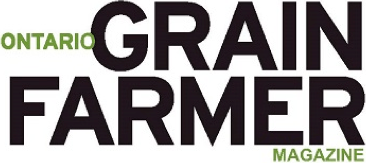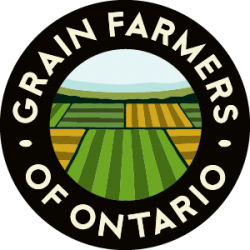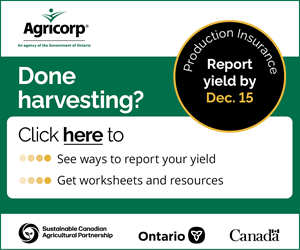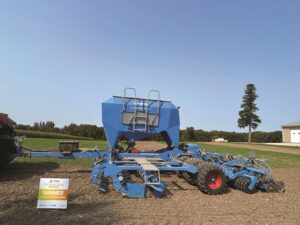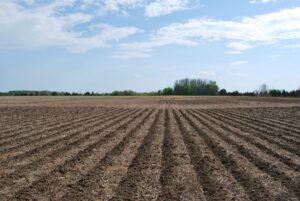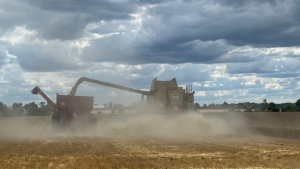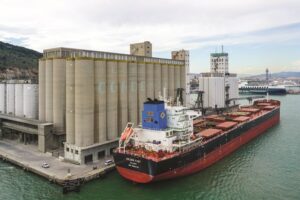Carbon credits
Understanding the opportunity for Ontario grain farms
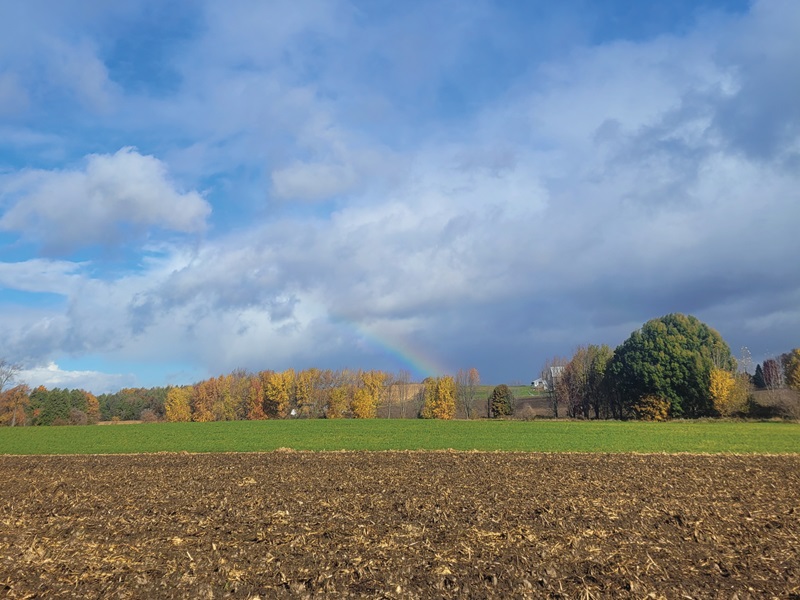
The landscape of carbon credits and climate action is constantly evolving and can be difficult to navigate. For Ontario grain farmers, this conversation involves potential new revenue streams and important considerations about farm practices and long-term planning. But what exactly are agricultural carbon credits, and what do farmers need to know before diving in?
WHAT ARE CARBON CREDITS, ANYWAY?
At its core, a carbon credit represents a verified reduction or removal of greenhouse gases (GHGs) from the atmosphere. Think of one credit as equaling one tonne of carbon dioxide (or its equivalent in other GHGs like methane or nitrous oxide).
Farmers can generate these credits by adopting specific practices that either store more carbon in the soil (sequestration) or reduce GHG emissions from their operations compared to “business-as- usual.” Companies, particularly large industrial emitters subject to regulations like Canada’s Output-Based Pricing System (OBPS), can buy these credits to offset their emissions and meet compliance targets. There’s also a growing voluntary market where companies buy credits to meet corporate sustainability goals.
HOW DO FARMERS EARN CREDITS?
Adopt practices: farmers implement approved practices known to reduce GHGs or sequester carbon.
Measure & verify: the GHG reduction or carbon storage achieved must be measured, often following specific rules called ‘protocols.’ This usually involves detailed record-keeping and third-party verification to ensure the credits are real, quantifiable, and permanent.
Generate credits: once verified, the reductions are certified as carbon credits.
Sell credits: farmers (often working through an ‘aggregator’) sell these credits on either compliance or voluntary carbon markets. Aggregators bundle credits from multiple farms, handle much of the complex verification and sales process and take a portion of the revenue.
WHICH PRACTICES TYPICALLY QUALIFY?
While specific protocols vary, common practices relevant to Ontario grain farms that are often discussed for carbon programs include:
Nitrogen management (4R Principles): using the Right Source, Rate, Time, and Place for fertilizer application to minimize nitrous oxide emissions.
Cover cropping: planting non-cash crops to protect the soil, reduce erosion, and potentially increase soil organic carbon.
Reduced tillage/no-till: minimizing soil disturbance helps keep carbon locked in the soil.
Rotational grazing: while less direct for grain crop operations, integrating managed grazing (e.g., grazing cover crops) can be part of a system.
Agroforestry: integrating trees or shrubs into farming systems.
UNDERSTANDING THE MARKETS
Compliance markets: These are government-regulated (like Canada’s federal system under the OBPS). Credits generated under approved federal protocols can be sold to regulated emitters. Currently, Ontario does not have its own provincial agricultural offset protocol within a compliance market. Farmers primarily look to the federal system or voluntary options.
Voluntary Markets: Companies voluntarily buy credits to meet their climate targets. These markets have various standards (e.g., Verra, Gold Standard) and protocols. Flexibility might be greater, but standards and prices can vary widely.
KEY CONSIDERATIONS BEFORE YOU COMMIT
Participating in carbon markets isn’t a simple decision. Here are crucial factors to weigh:
Additionality: this requirement relates to the credit incentivizing a change. The practice must be new for your operation or go beyond standard practice. You generally can’t generate credits for something you were already doing.
Permanence: the carbon benefits must be long-lasting. For soil carbon, this often implies a commitment to the practice for many years (contracts can span 10-plus years, and the underlying science often assumes benefits accrue over decades, with some standards looking at 100 years). What happens if you change practices later?
Verification and data: rigorous measurement, reporting, and third- party verification (MRV) are essential and can be complex and costly. Good record-keeping is non-negotiable. It’s important to ask – who owns your farm data under the agreement?
Contracts: understand the fine print. How long is the commitment? How and when are payments made? What are the fees (especially if using an aggregator)? What are the penalties if you can’t meet the contract terms (e.g., due to weather)?
Costs versus benefits: implementing new practices often requires upfront equipment, inputs, or time investment. Carbon credit payments might not cover all these costs. Current market prices can be volatile, and some analyses suggest returns per acre might be modest initially. Consider the co-benefits like improved soil health, resilience, and potential yield impacts.
Market Stability: carbon markets are still evolving. Some experts suggest farmers wait until markets become more stable and protocols are well-established before making long-term commitments.
What’s happening in Ontario?
Federal focus: Without a dedicated provincial agricultural offset program, Ontario farmers primarily look to the Federal Greenhouse Gas Offset Credit System. Protocols for practices like landfill methane and forestry exist, with others like manure management and potentially soil carbon under development by Environment and Climate Change Canada (ECCC).
OFCAF Program: The On-Farm Climate Action Fund (OFCAF) is not a carbon credit program but an incentive program that can help de-risk and reduce the cost of trying emissions-reducing practices. Delivered by the Ontario Soil and Crop Improvement Association (OSCIA), OFCAF is a key cost-share program helping farmers adopt BMPs like nitrogen management, cover cropping, and rotational grazing. Eligible farms can get funding (e.g., 65 per cent cost-share up to certain caps) to implement these practices. Check OSCIA’s website for current intake periods and program details.
Agricultural Clean Technology Program: another federal program that offers funding for adopting cleaner technologies, which might include equipment relevant to carbon-reducing practices.
GETTING STARTED: NEXT STEPS
The world of carbon credits is complex and evolving. If you are looking to participate, here are some ways to conduct due diligence:
Learn more: research the available federal programs and voluntary market options. Stay updated through resources like OSCIA, OFA, and agricultural publications, including the Ontario Grain Farmer Magazine.
Assess your practices: evaluate which new, eligible practices might fit your operation and long-term goals.
Consider OFCAF: explore the On-Farm Climate Action Fund as a way to get cost-share support for adopting beneficial practices like cover cropping and nitrogen management.
Before signing any contracts: read the contract and supplemental information thoroughly, noting any sustainability-related requirements. Talk to advisors about potential opportunities and risks with trusted farm advisors, agronomists, and potentially, legal counsel. While not legal advice, Grain Farmers of Ontario’s Grains Contracts Guide provides some foundational insights on contracts.
Ask questions: if you are considering working with an aggregator or program, ask detailed questions about additionality, permanence, measurement, verification, data ownership, contract terms, and payment structure.
Carbon markets may offer future opportunities for Ontario grain farmers, but careful evaluation and understanding of the commitments involved are essential. Focusing on practices that build soil health and resilience, potentially with support from programs like OFCAF, is a solid foundation regardless of direct participation in carbon markets today.
Ibrahim Mohammed, PhD, is Grain Farmers of Ontario’s sustainability and environment specialist. •
